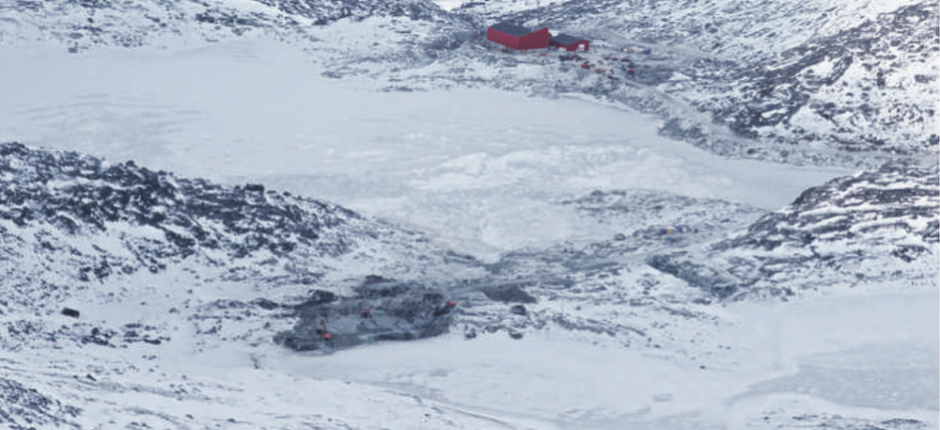Mining returns to Greenland with the opening of the Aappaluttoq ruby mine

Greenland’s mining industry comes back online this week when LNS, a Norway-based firm, officially begins production at the Aappaluttoq ruby mine.
In the two months leading up the mine’s opening, scheduled for Thursday, May 11, LNS Greenland, the local subsidiary, has been active at the site, located 160 kilometers (about 100 miles) south of Nuuk, extracting and processing rubies and sending them for cleaning at the company’s facility in the capital.
For now, sorting, according to Gunnar Moe, a company spokesperson, is being carried out by another company, but LNS hopes to begin doing this on its own at some point.
LNS has been involved in the Aappaluttoq project since 2012 but assumed control of the operation in September, when True North Gems, a Canada-based firm, was unable to secure enough capital to complete construction of the facility.
Just how much of the finishing work will be conducted in Greenland will depend on factors like the quality of the stones, cost and the amount of labour available.
The Aappaluttoq mine is expected to be operational for at least 10 years and will operate year-round. LNS expects to employ between 80 and 90 at any given time. At least 70 percent of those employees must be local hires, according to the company’s agreement with Greenland’s Self-Rule Authority. But, for now at least, all work in Greenland is being done by locally hired employees, according to Moe.
“We only have local hires working in the mine and at the processing facilities at the mine and at the cleaning facility. We plan to find sorters locally as well, but we’re not sure how many,” he says.
SEE RELATED: “Not enough” minerals in Greenland to fund independence: report
Jørgen T. Hammeken-Holm, the head of the Bureau of Minerals and Petroleum, is enthused that production at Aappaluttoq is ready to begin.
“It’s what we’ve all been working towards,” he says.
Hammeken-Holm had praise for the collaboration between the bureau and LNS, explaining that due to the nature of mining rubies, and not least because of their value, a number of unexpected decisions had to be made along the way.
“We’ve learned a lot in the process,” he says. “When LNS was granted the licence, we had an idea of how things would progress. Sometimes, reality is different.”
According to Hammeken-Holm, the bureau agreed with LNS to change several regulations while the mine was being established after it turned out that existing regulations were not suitable.
One such change included allowing the use of hydrofluoric acid in processing. Originally, this was deemed too dangerous, but LNS has been given permission to use the chemical, after showing that it could do so safely.
Mining has been identified by successive governments in Nuuk as one of the pillars of Greenland’s economy in the years to come, together with tourism and fishing. The country has been without an operational mine since 2013, when the Nalunaq gold mine ceased operations after becoming unprofitable. A number of projects are expected to come online in the coming years.
This article was originally published in the May 5 edition of Sermitsiaq, a Greenlandic weekly newspaper that is owned by The Arctic Journal’s parent company.